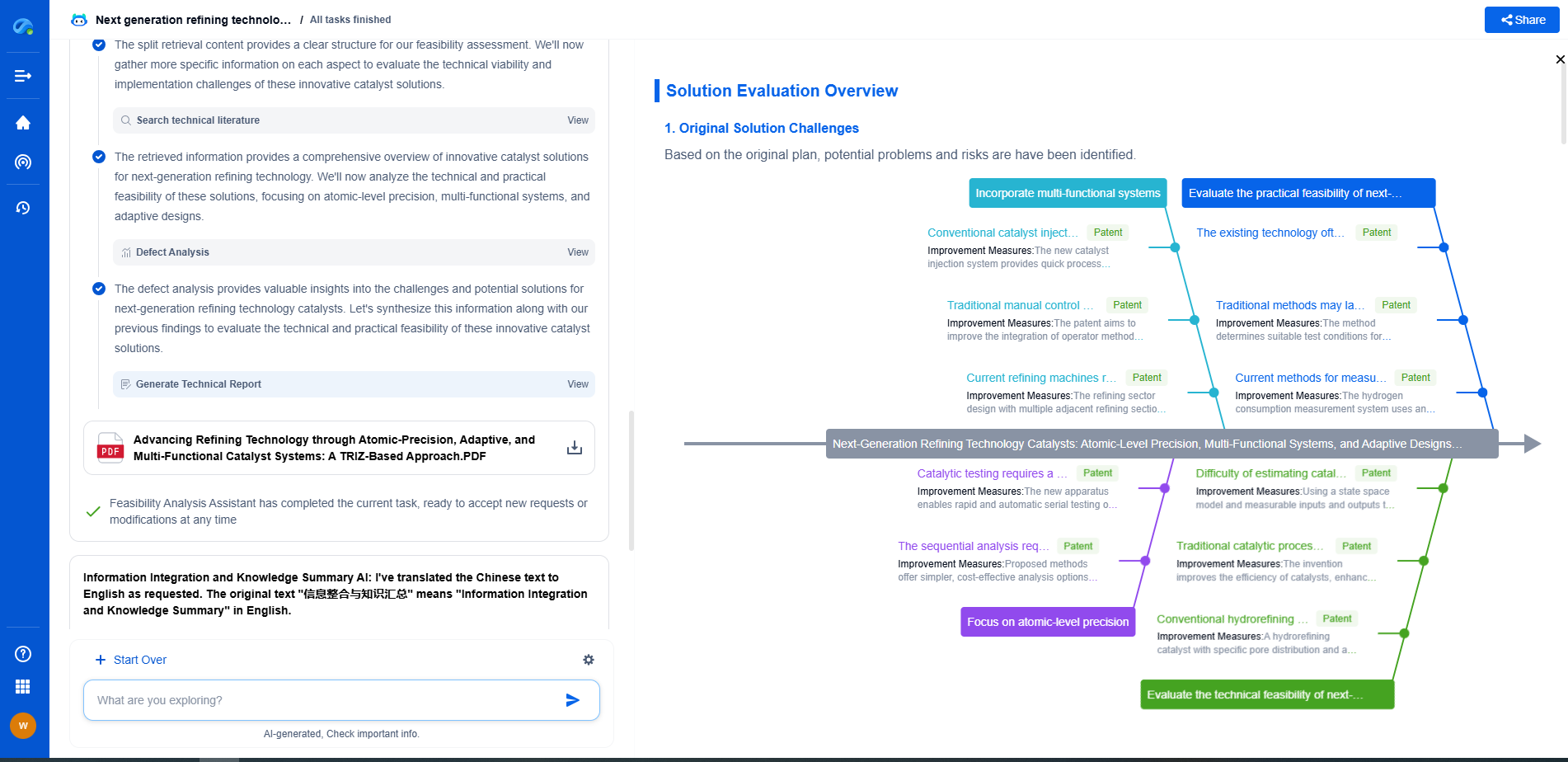Ellipsometers Demystified: Measuring Thin Films with Polarized Light
JUL 15, 2025 |
Ellipsometry is a powerful and non-destructive optical technique used to investigate the thickness and optical properties of thin films. Its strength lies in its precision and ability to analyze films with thicknesses ranging from a few nanometers to several micrometers. By measuring the change in polarization as light reflects off a surface, ellipsometry provides detailed insights into the film's characteristics, making it invaluable for industries like semiconductors, coatings, and biofilms.
The Principles of Polarized Light
To grasp how ellipsometry works, it is essential to understand the concept of polarized light. Light waves can oscillate in various directions. When light becomes polarized, its waves are restricted to a particular direction. Ellipsometry exploits this by using polarized light to interact with a sample, allowing for precise measurement of the changes in polarization upon reflection. The key parameters involved in these changes are the amplitude ratio (Ψ) and the phase difference (Δ) between the p- and s-polarized light components.
Instrumentation and Setup
An ellipsometer consists of several key components: a light source, polarizer, compensator, analyzer, and a detector. The light source emits a beam of polarized light, which is directed at the sample. Upon reflection, the light's polarization state is altered depending on the sample's properties. The reflected light then passes through an analyzer before reaching the detector, which records the changes in polarization. Modern ellipsometers can be classified into several types, including rotating analyzer/polarizer, phase-modulated, and spectroscopic ellipsometers, each with unique benefits for specific applications.
Data Interpretation: From Angles to Insight
The data collected from ellipsometry is usually represented as Ψ and Δ. These values are used in modeling to extract meaningful information about the film's thickness and refractive index. Advanced models can also provide insights into the film's composition and surface roughness. The modeling process often involves fitting the measured data to a theoretical model of the film stack, which helps in understanding the film's optical properties.
Applications Across Industries
Ellipsometry's versatility makes it applicable across various industries. In the semiconductor industry, it is used to ensure precise control over thin film deposition processes. In the field of photovoltaics, ellipsometry helps optimize the performance of solar cells by analyzing anti-reflective coatings. Additionally, it is employed in the development of new materials and coatings, providing valuable feedback during the research and development phase.
Challenges and Considerations
Despite its capabilities, ellipsometry is not without challenges. The accuracy of measurements can be affected by factors such as surface roughness, complex film structures, and the presence of multiple layers. Careful calibration and modeling are essential to address these challenges and ensure reliable results. Furthermore, ellipsometry requires specialized knowledge to interpret results accurately, underscoring the importance of expertise in this field.
The Future of Ellipsometry
As technology advances, the capabilities of ellipsometry continue to expand. Innovations in spectroscopic ellipsometry, for instance, are enabling more detailed analyses over wider spectral ranges, enhancing our understanding of complex materials. With ongoing developments in software and computational power, the modeling and interpretation of ellipsometric data are becoming more sophisticated, paving the way for new applications and discoveries.
In conclusion, ellipsometry is a vital tool for measuring and understanding the properties of thin films with unparalleled precision. By harnessing polarized light, it provides critical insights across a myriad of industries, driving innovation and ensuring quality in material development and production processes. As the field evolves, ellipsometry's role in scientific and industrial settings is set to grow, continuing to demystify the complex world of thin films.
From interferometers and spectroradiometers to laser displacement sensors and fiber optic probes, the field of optical measurement is evolving at light speed—driven by innovations in photonics, MEMS integration, and AI-enhanced signal processing.
With Patsnap Eureka, biomedical innovators can navigate cross-domain insights in optics, electronics, and biocompatible materials, while discovering IP trends across academic, clinical, and commercial datasets.
💡 Fuel your next breakthrough in optical health tech—start using Patsnap Eureka to unlock deep insights today.
- R&D
- Intellectual Property
- Life Sciences
- Materials
- Tech Scout
- Unparalleled Data Quality
- Higher Quality Content
- 60% Fewer Hallucinations
Browse by: Latest US Patents, China's latest patents, Technical Efficacy Thesaurus, Application Domain, Technology Topic, Popular Technical Reports.
© 2025 PatSnap. All rights reserved.Legal|Privacy policy|Modern Slavery Act Transparency Statement|Sitemap|About US| Contact US: help@patsnap.com

